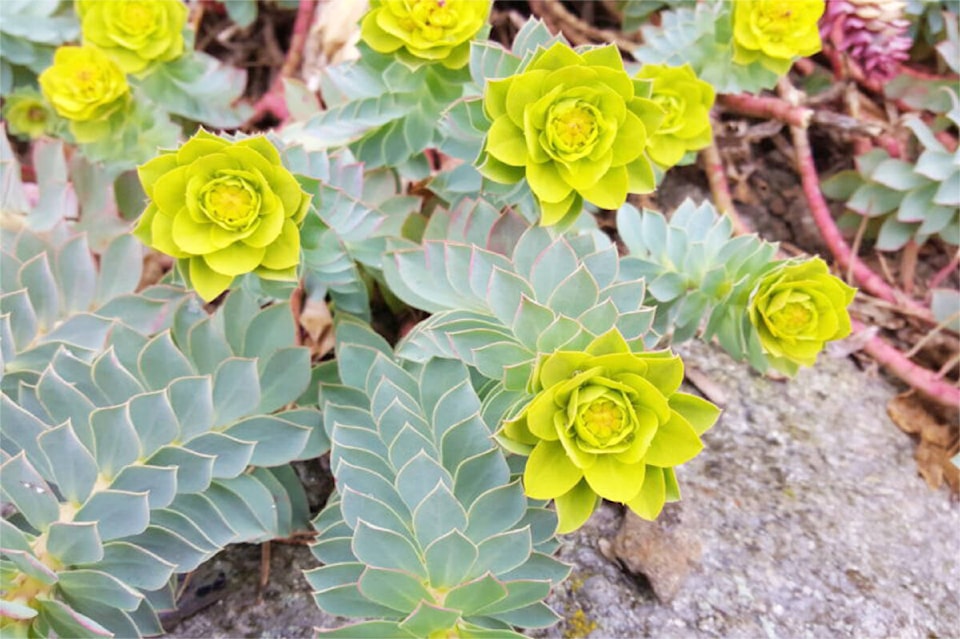Do you know what’s growing in your backyard?
You may be harbouring an invasive plant without even knowing it. Invasive plants are those that have either been introduced intentionally because they look great, or by accident – like when seeds are moved through soil.
Invasive species are the second greatest threat to biodiversity after habitat loss, and this month, the Invasive Species Council of BC (ISCBC), urges you to take a closer look at what’s in your yard. Here are examples of some invaders doing serious damage in B.C.
· Myrtle spurge (Euphorbia myrsinites) is an escaped garden perennial that releases chemicals from its roots stopping other plants from growing near it. Toxic to humans, livestock and wildlife, its sap can cause nausea, vomiting and diarrhea, blisters on skin, even blindness if it gets in eyes. This plant is recognized as invasive and toxic in BC.
· Daphne (Spurge-laurel) (Daphne laureola) was once a popular ornamental in gardens. It is listed as a poisonous plant by the Canadian Poisonous Plants Information System and as a toxic plant by WorkSafe BC. Its toxic sap can cause skin rashes, nausea, swelling of the tongue and even coma.
· Japanese knotweed (Reynoutria japonica) Knotweed can grow through concrete and asphalt damaging infrastructure. It can easily regrow even from the smallest fragments of stem or root. This can result in significant control, management and repair costs.
· Giant hogweed (Heracleum mantegazzianum) produces a highly toxic sap that can cause burns, blisters and scarring blistering. WorkSafe BC has issued a Toxic Plant Warning for Giant hogweed requiring workers to wear protective gear that completely covers skin, when handling this plant.
· Scotch broom (Cytisus scoparius) This plant was introduced from the Mediterranean and is an escaped garden plant in Canada. It takes over, so native plants don’t stand a chance. Where wildfire is a concern, Scotch broom is especially serious as it is very oily and highly flammable.
Every year the B.C. government proclaims May ‘Invasive Species Action Month’ recognizing the impact of invasive species on the province’s environment, economy, society, and human health. You can make a difference when you Observe & Report.
Join the I Spy Identify project on iNaturalist and be part of the active community observing nature and protecting Canada’s outdoor spaces from invasive species.
Gardeners, be sure to use the guide Grow Me Instead to find great alternatives to invasive plants in your yard and your garden. Preventing the introduction and spread of invasive species is possible with simple changes to our habits.
The Invasive Species Council of B.C. is dedicated to keeping our landscapes and communities free of invasive species.
It provides a coordinated, province-wide approach to reducing the spread and the impact of invasive species in B.C. ISCBC unites efforts throughout the province and collaborates with a variety of partners to develop unique solutions for the wide variety of ecosystems in B.C.
READ MORE: DOWN TO EARTH: Keep making individual changes in 2023 to help the environment
READ MORE: Elephant Hill wildfire results in losses of $1B per year: Indigenous report
Do you have a comment about this story? email:
ruth.lloyd@wltribune.com
Like us on Facebook and follow us on Twitter.
